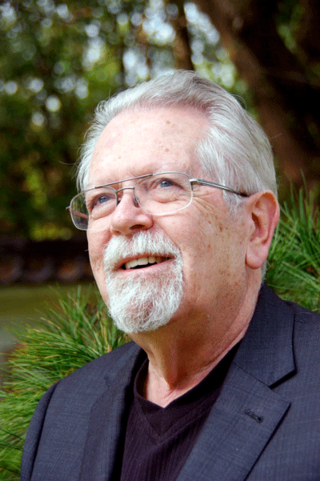Related Research Articles
Yakuza, also known as gokudō, are members of transnational organized crime syndicates originating in Japan. The Japanese police and media, by request of the police, call them bōryokudan, while the yakuza call themselves ninkyō dantai. The English equivalent for the term yakuza is gangster, meaning an individual involved in a Mafia-like criminal organization. The yakuza are known for their strict codes of conduct, their organized fiefdom nature, and several unconventional ritual practices such as yubitsume or amputation of the left little finger. Members are often portrayed as males with heavily tattooed bodies and wearing fundoshi, sometimes with a kimono or, in more recent years, a Western-style "sharp" suit covering them. This group is still regarded as being among "the most sophisticated and wealthiest criminal organizations".

Shoko Asahara, born Chizuo Matsumoto, was the founder and leader of the Japanese doomsday cult known as Aum Shinrikyo. He was convicted of masterminding the deadly 1995 sarin gas attack on the Tokyo subway, and was also involved in several other crimes. Asahara was sentenced to death in 2004, and his final appeal failed in 2011. In June 2012, his execution was postponed due to further arrests of Aum members. He was ultimately executed on July 6, 2018.

The Tokyo subway sarin attack was an act of domestic terrorism perpetrated on 20 March 1995, in Tokyo, Japan, by members of the cult movement Aum Shinrikyo. In five coordinated attacks, the perpetrators released sarin on three lines of the Tokyo Metro during rush hour, killing 13 people, severely injuring 50, and causing temporary vision problems for nearly 1,000 others. The attack was directed against trains passing through Kasumigaseki and Nagatachō, where the Diet is headquartered in Tokyo.
Fumihiro Joyu is a former spokesperson and public relations manager of the Japanese doomsday cult Aum Shinrikyo, and served as the de facto chief of the organization from 1999 to 2007, when he split and formed a new group.

John Gordon Melton is an American religious scholar who was the founding director of the Institute for the Study of American Religion and is currently the Distinguished Professor of American Religious History with the Institute for Studies of Religion at Baylor University in Waco, Texas, where he resides. He is also an ordained minister in the United Methodist Church.
The Matsumoto sarin attack was an attempted assassination perpetrated by members of the Aum Shinrikyo doomsday cult in Matsumoto, Nagano Prefecture, Japan on the night of June 27, 1994. Eight people were killed and over 500 were harmed by sarin aerosol that was released from a converted refrigerator truck in the Kaichi Heights area. The attack was perpetrated nine months before the better-known Tokyo subway sarin attack.

Yoshio Kodama was a Japanese right-wing ultranationalist and a prominent figure in the rise of organized crime in Japan. The most famous kuromaku, or behind-the-scenes power broker, of the 20th century, he was active in Japan's political arena and criminal underworld from the 1930s to the 1970s, and became enormously wealthy through his involvement in smuggling operations.

On November 5, 1989, Tsutsumi Sakamoto, a lawyer working on a class action lawsuit against Aum Shinrikyo, a doomsday cult in Japan, was murdered, along with his wife Satoko and his child Tatsuhiko, by perpetrators who broke into his apartment. Six years later, following the 1995 attack on the Tokyo subway, the murderers were uncovered and it was established that the murderers had been members of Aum Shinrikyo at the time of the crime.
Banjawarn Station is a remote cattle station in Western Australia, that previously operated as a sheep station. In the 1990s Banjawarn was owned by the Japanese doomsday cult Aum Shinrikyo, and following the Tokyo subway attack was the subject of an Australian Federal Police (AFP) investigation. Banjawarn is one of the 70 largest stations in Australia.
A doomsday cult is a cult that believes in apocalypticism and millenarianism, including both those that predict disaster and those that attempt to destroy the entire universe. Sociologist John Lofland coined the term doomsday cult in his 1966 study of a group of members of the Unification Church of the United States: Doomsday Cult: A Study of Conversion, Proselytization, and Maintenance of Faith. In 1958, Leon Festinger published a study of a group with cataclysmic predictions: When Prophecy Fails: A Social and Psychological Study of a Modern Group that Predicted the Destruction of the World.
Tomomitsu Niimi was an Aum Shinrikyo member convicted for his participation in the Sarin gas attack on the Tokyo subway and a number of other crimes. He was Aum's "minister of internal affairs".

Teruo Ishii was a Japanese film director best known in the West for his early films in the Super Giant series, and for his films in the ero guro ("erotic-grotesque") subgenre of pinku eiga such as Shogun's Joy of Torture (1968). He also directed the 1965 film Abashiri Prison, which helped to make Ken Takakura a major star in Japan. Referred to in Japan as "The King of Cult", Ishii had a much more prolific and eclectic career than was generally known in the West during his lifetime.
James R. Lewis was an American philosophy professor at Wuhan University. Lewis was an academic, scholar of religious studies, sociologist of religion, and writer, specializing in the academic study of new religious movements, astrology, and New Age.

The Public Security Intelligence Agency is the domestic intelligence agency of Japan. It is administered by the Ministry of Justice and is tasked with internal security and espionage against threats to Japanese national security based on the Subversive Activities Prevention Act and the Act Regarding the Control of Organizations Which Committed Indiscriminate Mass Murder. Any investigation conducted by the agency needs to go through the Public Security Examination Commission (PSEC) in order to determine if there is a justification to investigate and clamp down on an organization's activities.

Japan–Montenegro relations refers to the bilateral relationship between Japan and Montenegro. Japan recognised Montenegro on 16 June 2006, stating then that "the policy of the Government of Japan [is] to attach importance to the peace and stability of Western Balkans countries including Montenegro".

Aleph, formerly Aum Shinrikyo, is a Japanese new religious movement and doomsday cult founded by Shoko Asahara in 1987. It carried out the deadly Tokyo subway sarin attack in 1995 and was found to have been responsible for the Matsumoto sarin attack the previous year.

Masami Tsuchiya was a senior member of Aum Shinrikyo, responsible for the deaths of a combined 19 people and for the production of sarin, VX nerve agent, PCP and LSD. He is also notable for not showing remorse at the trials and remaining loyal to cult leader Shoko Asahara. He was member of the Ministry of Health of the cult, with prosecutors calling him "the second most important figure involved in the gas attacks by the Aum Shinrikyo cult, after cult leader Shoko Asahara himself."

The 2019 Tokyo car attack was a vehicle-ramming attack that occurred on January 1, 2019, in Tokyo, Japan. Suspect Kazuhiro Kusakabe told authorities he intentionally rammed into pedestrians crowded into narrow Takeshita Street in Harajuku district as a terrorist attack in retaliation for the execution of Aum Shinrikyo doomsday cult members. The New Year's Day attack left eight injured. A ninth person was also directly injured by the driver. The suspect said he initially planned an arson attack by spreading kerosene with a high-pressure washer at the crowd at the nearby Meiji Shrine but found that vehicles were not permitted there.

Me and the Cult Leader (Aganai) is a 2020 Japanese documentary film. The film follows the director, Atsushi Sakahara, a victim of the 1995 Tokyo Subway Sarin Gas Attack, and Araki Hiroshi, a current executive member of the doomsday cult Aleph behind the attack, as they travel to their hometowns in the Kyoto prefecture. It premiered at the Sheffield Doc Fest as part of its Ghosts and Apparitions strand.
AUM: The Cult at the End of the World is a 2023 documentary film directed by Ben Braun and Chiaki Yanagimoto in their directorial debuts, based on the book The Cult at the End of the World by David E. Kaplan and Andrew Marshall. The film follows the Japanese doomsday cult, Aum Shinrikyo.
References
- ↑ "David E. Kaplan Named New Director of International Consortium of Investigative Journalists (ICIJ)". Archived from the original on 2016-03-04. Retrieved 2011-02-26.